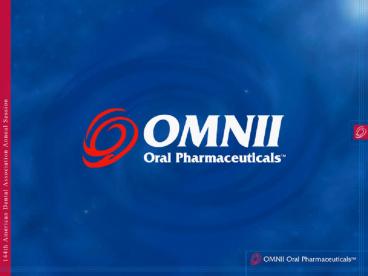Overview - PowerPoint PPT Presentation
1 / 22
Title: Overview
1
(No Transcript)
2
Overview
- Principles of QLF
- The Equipment
- The Results
- Clinical Uses
- Questions and Demonstration
3
Why a New Diagnostic Method?
- Prevent cavitation
- Spotting trouble early
- early lesions (white spots)
- bacterial activity
- Follow trouble through time
- Objective support for the prevention process
- Enhance the quality of oral care
- Improve the quality of restorations and sealants
- Improve, encourage and focus the quality of oral
hygiene
4
Early Lesion Detection
- Scattering properties of tooth tissue allow
contrast enhancement
E
D
White Spot
5
Red Fluorescence Detection
E
D
6
Pre-invasive Lesion Detection
7
QLF Contrast Enhancement
8
Examples of Bacterial Activity
9
The System and The Software
10
Dentistry QLF-Scan, QLF-Pro
11
Longitudinal Monitoring
12
Caries Mapping
13
Red Fluorescence Quantification
clean
RCutoff 20
14
Danger Zones Bacterial Activity
Sealants
Restorations
Hidden Caries
15
Use During Restorative Procedures
- Diagnose presence of secondary caries
- Check removal of bacterially affected tooth
substance
All pictures courtesy of Dr. R. Heinrich-Weltzien
and Dr. J. Künisch, Friedrich-Schiller
University of Jena, Erfurt, Germany
16
Red Fluorescence Caries Excavation
RCutoff 20
P. Sas 2003
17
Red Fluorescence Sealants
Sound Sealant
Leaking Sealant
R. Heinrich et al. 2001
18
Conclusions
- Agreement with visual inspection (Radike)
- better sensitivity
- very good specificity
- Quick patient assessment
- Amount of initial lesions detected with
QLF-Vision indicates caries risk - Longitudinal monitoring of lesions
- follow de- and remineralization in time
- QLF-Vision is a reliable method for early lesion
monitoring
19
- QLF
- makes the
- invisible
- visible
20
Clinical Validation
- 1994 Øgaard and ten Bosch demonstration of
lesion tracking by measuring scattering
properties - 1995 de Josselin de Jong ea Improvement of QLF
system - 1997 Al-Khateeb ea detection of remin with QLF
in weekly intervals consistent with
microradiography - 1998 Al-Khateen ea QLF can be used to evaluate
pre-invasive treatment - 1998 Connersville study (IU)
- QLF appropriate for use on occlusal as well as
buccal-lingual surfaces - QLF is practical for large-scale clinical studies
- QLF detects 4-9 times as many lesions vs. visual
inspection - QLF validity for caries detection supported (ten
Cate ea, 1999)
21
Clinical Validation
- 2001 Traneus ea QLF is a sensitive method for
longitudinal monitoring of incipient lesions on
smooth surfaces - Heinrich ea (to be published) QLF was able to
separate groups of high-caries patients (33) that
were given prophylaxis with or without the
application of fluoride varnish, every 8 weeks
for 6 months.
22
Clinical Validation in Progress
- At IUPUI (Dr. George Stookey)
- 2-Year study to validate QLF for the detection of
primary caries - 2-Year study to validate QLF for the detection of
secondary caries - 18-Month study of QLF to monitor caries in
orthodontic patients - 18-Month study of ability of QLF to detect
differences in caries rates in patients provided
toothpastes with different concentrations of
fluoride - At Inspektor
- Correlation between red fluorescence and specific
bacterial strains. - Clinical study on bracket related incipient caries































